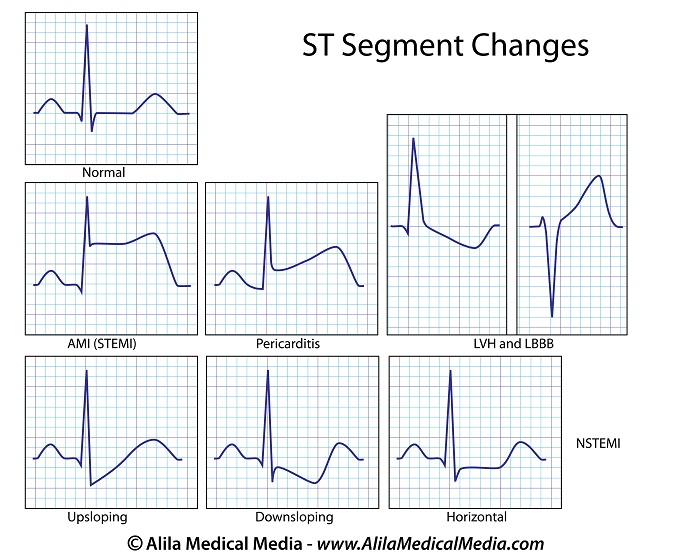Acute Coronary Syndrome Explained Clearly
Acute Coronary Syndrome (ACS): Unstable Angina, NSTEMI and STEMI - Explained Simply in 5 min
This lesson includes an animated video lecture, downloadable images, quiz questions and a PDF
Acute coronary syndrome, ACS, is a group of conditions that occur when blood supply to an area of the heart muscle, the myocardium, is suddenly reduced or blocked.
Reduced blood supply is termed ischemia. A prolonged ischemia can lead to death of the heart tissue, known as heart attack or myocardial infarction.
A typical symptom of ACS is central chest pain or discomfort that may spread to the back, jaw, left shoulder or arm. The pain may also be felt in the abdomen and can be mistaken for indigestion. Other symptoms include shortness of breath, heavy sweating, nausea, palpitations, and fainting. Women and older people often have atypical symptoms. Chest pain is not reported in about 30% of cases. About 20% of patients have mild or no symptoms.
Risk factors include: aging, family history of heart diseases, smoking, diabetes, hypertension, high cholesterol, obesity, sedentary lifestyle, unhealthy diets, and psychosocial stress.
The most common cause of ACS is the formation of a blood clot in an artery already narrowed by an atherosclerotic plaque. Plaques are deposits of lipids, fibrous tissue and calcium, that accumulate slowly overtime. A plaque may become inflamed and rupture, exposing substances that promote coagulation, producing a blood clot on top of the plaque.
Less common causes include coronary artery embolism, coronary spasms, and coronary artery dissection.
Depending on the location and the extent of obstruction, one of the following conditions may result:
- Unstable angina,
- Non-ST-segment elevation myocardial infarction, NSTEMI,
- Or ST-segment elevation myocardial infarction, STEMI.

These conditions are differentiated based on ECG findings and cardiac marker levels.
Markers are substances released into the bloodstream upon death of cardiac myocytes.
Subscribe to one of the courses below to continue!
This content is available within the following courses:

Basic Fundamentals of Cardiology: 40 animations, plus downloadable PDFs, downloadable images, and quizzes.

Our Signature Animated Videos on Electrocardiography: 25 animations, plus downloadable PDFs, downloadable images, and quizzes.

Basic Fundamentals of Cardiology: 40 animations, plus downloadable PDFs, downloadable images, and quizzes.

Our Signature Animated Videos on Electrocardiography: 25 animations, plus downloadable PDFs, downloadable images, and quizzes.